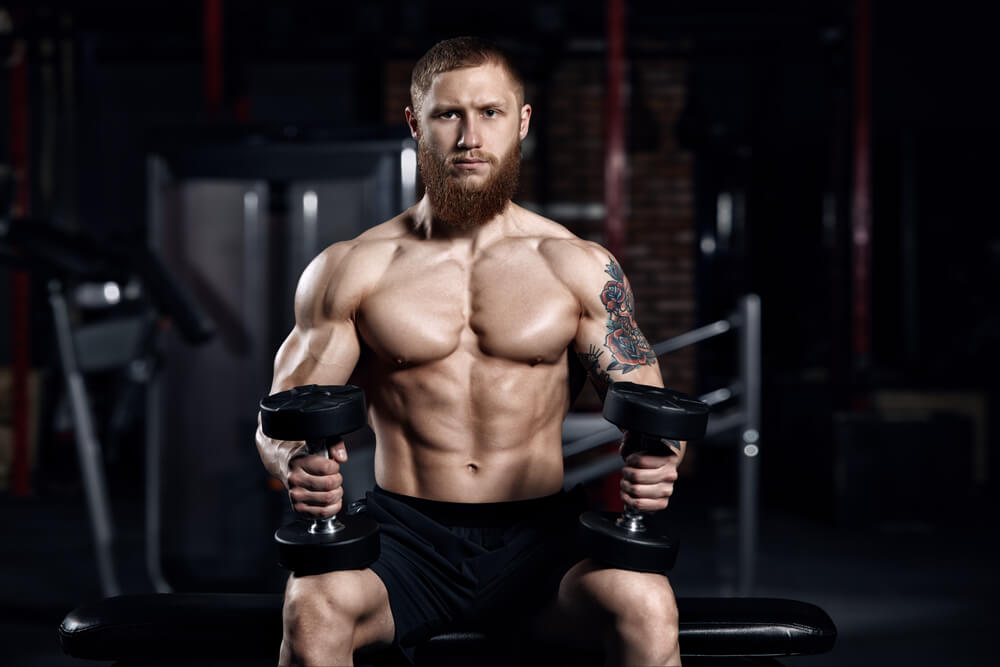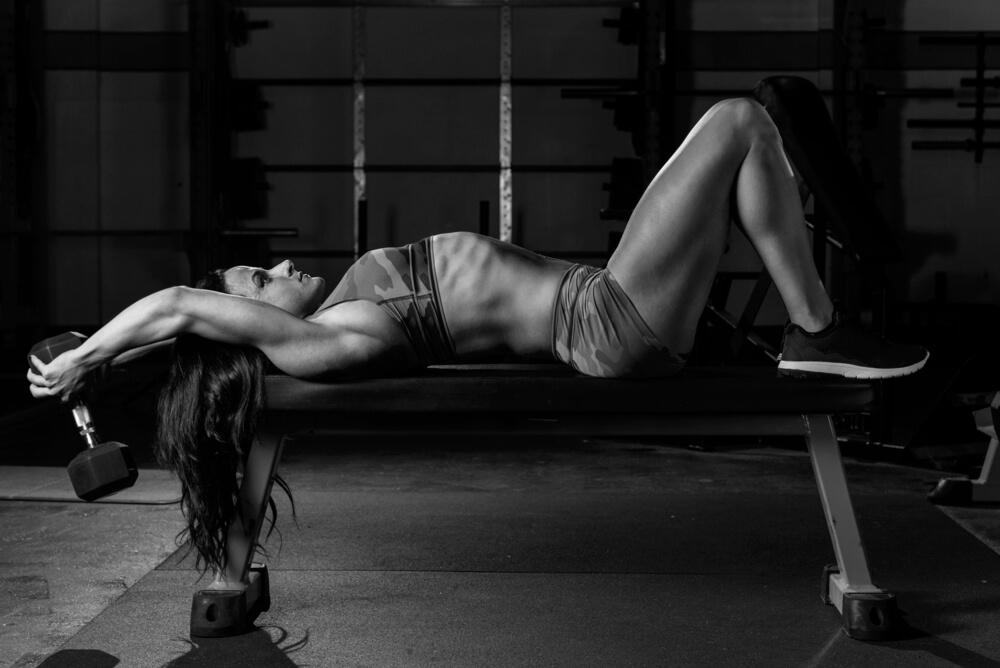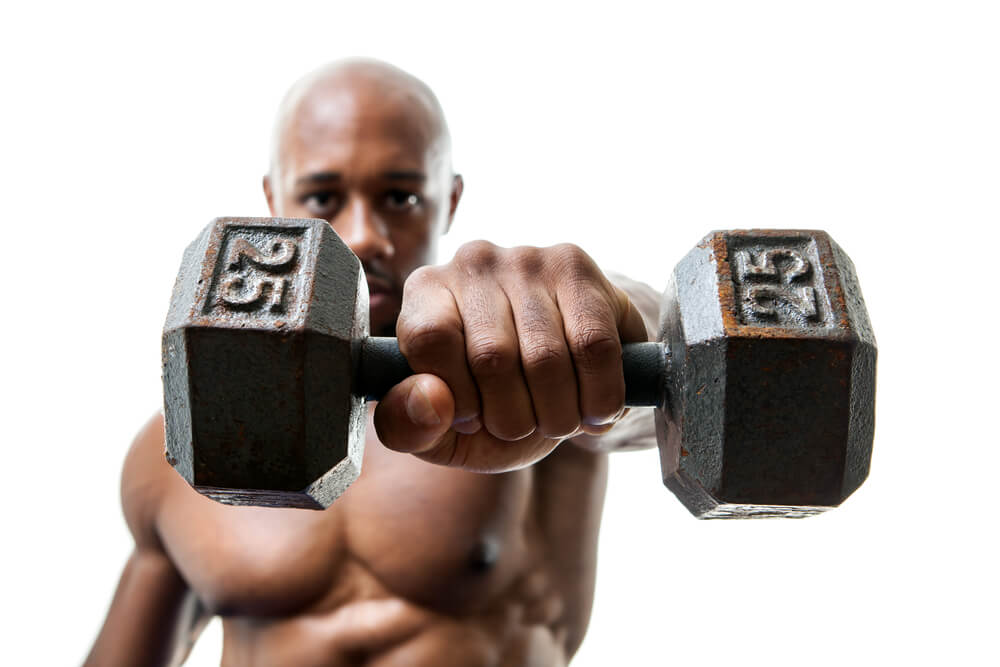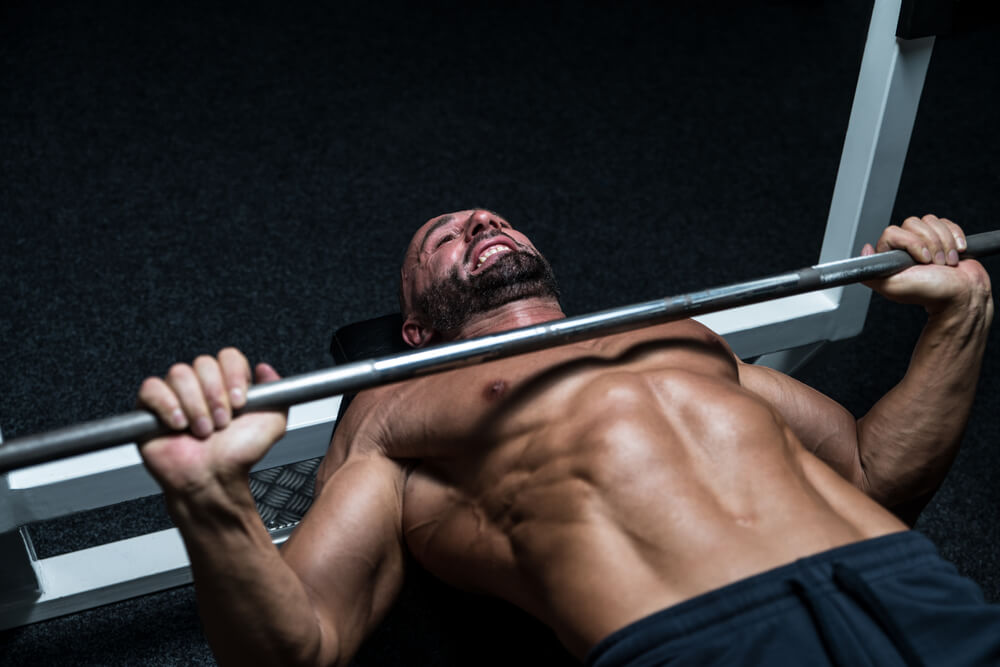 Build Muscle Without Heavy Weights? We give you the info you need to prove that theory wrong. Lighter weights can result in muscles. Just try this!
Build Muscle Without Heavy Weights? We give you the info you need to prove that theory wrong. Lighter weights can result in muscles. Just try this!
Is it even possible to build muscle without stacking 45s on the bar?
You’re likely thinking if I don’t lift heavy I can’t grow. Heavy lifting certainly has a place in the gym, but it’s not the only way to build muscle. There are plenty of ways you can use lighter weights to stimulate growth.
Knowing these techniques is 100% necessary. There are lots of reasons it’s important to know how to use light weights. At some point, you’re going to be forced to workout at a crappy hotel gym, pull out the dusty weights from under your bed or maybe have an injury that’s aggravated by high-intensity loads. Whatever your reason is, you’re going to have to use lighter weights at some point. When that time comes, don’t make excuses.
Go and get results.
To be clear, light weight can mean a lot of different things. That’s especially true if you’re eight-time Mr. Olympia, Ronnie Coleman. Light weight will mean less than 70% of your one rep max or weights you would normally lift for 15 plus reps.
So what are you going to get out of training with these types of weights?
We’ll show you exactly what you’ll get.

Advantages Of Training With Lighter Weights
For starters, you are going to save yourself a ton of time loading and unloading the bar and machines. It’s important to understand that training lighter doesn’t mean less intense training. Workouts and individual exercises will feel challenging, just in different ways. It’s like trying to run 2 miles as fast as you can or running sprints.
At the end, you’re going to be tired and improve, but it’ll feel different.
We know that different is good. Different is needed to make progress and break plateaus. Using lighter weights opens the door for new challenges your muscles have to respond to and new personal goals you can set aside from lifting a set amount of weight.
What follows are the biggest advantages of training with lighter weights.
Movement Quality And Efficiency
Inevitably heavyweight leads to subpar form. It happens to the best of us. We want that last rep. We want it so bad we’re willing to push an elbow or knee just a touch out of alignment to get that weight up. It’s not good for us. We know it, but we do it because we thrive off of that challenge. When training with lighter weights your ego is checked so you won’t be put in that situation.
If you are, the weight will be easier to handle and your risk of injury goes way down.
When you can complete reps with correct form it carries over to heavier lifts. Practice makes perfect so the more you practice reps with light weight, the better you’ll become at those lifts when the bar starts to bend. In turn, your movement efficiency increases so more weight can be moved.
A great example of this is the bench press. It’s easy to lie back and press the weight up as hard as you can. But if you want to be efficient, effective and grow, you need to do more than push. Activating your glutes, lats and traps creates a stable base you can push more weight from. It’s impossible to learn how to do this with heavy weight because so much is going on.
Take your time maximizing your muscle activation on exercises with lighter weight. It’ll carry over to higher intensity days.
Freedom To Train Wherever And Whenever You Want
How often do you walk into a gym and not see the machine you want, or see that all the equipment is being used?
What do you do?
Walk out and try again the next day?
Sit and twiddle your thumbs?
Or, do you maybe even get demoralized because you can’t follow your plan?
Whatever it is, there’s another way.
Knowing how to train with lighter weights means you can get an awesome workout with whatever equipment you find. Hotel gyms, high school weight rooms, and basements won’t be roadblocks to your goals. They’ll just be a quick lane change instead of a detour.
Improve Mobility: Keep Your Joints And Connective Tissue Happy
Mobility is important, but it ends up being like an oil change. It’s something that you know needs to be done regularly, but if you skip once or twice the result won’t be instant destruction. If you keep ignoring it, however, consequences will ensue.
Stretching may not be everyone’s cup of tea and that’s okay.
You can lift weights and improve mobility.
Training through large ranges of motions improves muscles and joints. In fact, adding a contraction helps the muscles stay lengthened.
As you’ll see, training at end range of motions, or even beyond, is another way to use lighter weights. This also requires a greater range of motion. Any improvement in range of motion helps joints and muscles stay in optimal positions. If they stay in optimal positions, muscles can do the job they were meant to do so knots and overactive muscles won’t pester you.
Workout More And Spend Less Time In The Gym
Shorter rest periods means that more of the time spent in the gym is lifting weights instead of resting. If you did deadlifts for one to three reps, you’d end up lifting for 15 seconds and resting at least 3 minutes.
Shifting over to lighter weights, you’ll be working and resting equal amounts. This helps you get more work done in less time so you can spend your extra time working on all those exercises you normally skip or even make time for life outside the gym.
Metabolic Conditioning Is Integrated
Generally, with lighter weights, there will be higher reps. Many of the exercises will be done in less stable positions so more muscles will have to contract to stabilize the body.
Combine these two factors and workouts become highly metabolic.
Instead of splitting lifting and cardio you can get your heart rate up while you lift weights. Maintaining or improving cardiovascular fitness isn’t just useful for catching the bus. The body adapts over time increasing the amount of hemoglobin and mitochondria throughout and boosting energy levels and stamina. Improved stamina is particularly helpful for those tough hypertrophy days.

This Is How To Build Muscle Without Heavy Weights
You’ll hopefully be familiar with some of these techniques. It’s the specific application that will matter. Here are the specific ways you can use lighter weights.
Supersets
Supersets involve doing one exercise then doing another exercise right away without rest. For example, doing a set of bench presses then doing a set of rows without resting in between. Combining exercises without rest gives your muscles and heart less time to recover so they’ll be fatigued more easily. Without a doubt, it’s more challenging to superset exercises over completing them one by one.
A few ways to combine exercises are with opposing muscle groups or doubling up on the same muscle groups. Two ways to double down are the pre-exhaust and post-exhaust method. Pre-exhaust involves doing an isolation exercise for a muscle before moving to a compound exercise. The post-exhaust method is just the opposite.
For example, a pre-exhaust superset could be dumbbell flyes supersetted with dumbbell chest presses. Post-exhaust is just the inverse. Both methods lead to faster muscular failure with less weight. This method is ideal for when you have a small rack of dumbbells.
Make Your Reps Dynamic
Turning the standard bilateral or both hands/feet moving together at the same time into a dynamic movement is much more challenging. It requires more coordination, stability and core control. It’s truly one of the best ways to take advantage of lighter weights, build stability and even athleticism. Here are a few options:
- Alternating Reps: One arm/or leg moves at a time. Lunges can be alternated, but a better option is taking an exercise that’s normally done with both limbs. For example, instead of a barbell row, grab two dumbbells. Row the right arm up and down, then the left and repeat.
- Reciprocating Reps: Let’s take it a step further. With this, both limbs will move at the same time but in a completely opposite pattern. For example, on a reciprocating chest press, the left arm will go up as the right arm goes down. The body will have to dynamically stabilize and it’ll keep the muscles under constant tension.
- Unilateral Reps: Like the name implies, only one arm or leg will be worked at a time and it’s perfect for weeding out imbalances. You likely already do a lot of unilateral reps like dumbbell rows or single arm triceps extensions. The gravy is when big compound exercises turn unilateral. Instead of doing Romanian deadlifts, try single leg deadlifts. Or, instead of a military press, try a standing unilateral overhead dumbbell press.
Tempo: Slow It Down Or Speed It Up
Tempo almost always gets overlooked. A simple change in the rhythm of the movement makes all the difference. We know that time under tension is one of the most important factors for growing muscle. It also requires less weight because the muscles are worked so vigorously.
All you need to do is 12 reps where you lower the weight for three to five seconds and lift it for two to four seconds and you’re golden.
On the other hand, you can increase the tempo to lift and lower the weight as fast as you can. Explosive or ballistic lifting helps recruit the bigger fast twitch muscles fibers while firing up the nervous system to activate even more muscle.
This technique actually works best using a very light weight, around 50% of your one rep max.
Ballistic lifting works so well with lighter weight because the speed of the lift makes it more challenging than the weight. The faster something moves, the more force is needed. Try this: Dumbbell row 50% of your one rep max for five to eight reps lifting the weight as fast as you can repeating for five sets. Lighten the weight or stop the set when you lose more than 10% of your speed.
Range Of Motion
Each exercise has a sticking point, a part that’s much harder than every other part. It’s the part that if you could just get past, you’d be able to lift so much more weight. It could be the bottom of a squat or getting the bar to your knees deadlifting.
By focusing on these specific ranges of motions, you’ll be focusing on the weakest part of the movement so less weight will be needed.
Less weight here by no means it’s easier.
It actually will feel harder than using the normal range of motion and weight.
A great example is deficit deadlifts with an end range of motion to the knees. What you would do here is stand on a small and stable platform that’s two to three inches tall. Set up as you normally would for deadlifts except you’ll have to get much lower, then lift the bar only to your knees and lower it back down.
Congrats!
Why?
You just did the hardest part of a deadlift and made it harder. It’s guaranteed you’ll feel it for a few days and you won’t need to slide nearly as many 45s onto the bar.

Trade This For That
We’ve put together some alternative exercises you can do to replace the typical gym staples.
Be warned: These are much tougher than you think.
Bench Press
-Single arm dumbbell press with slow tempo allows for greater range of motion
-Fast tempo dumbbell press with 50% of max or plyometric push-ups
Seated Military Press
-Standing reciprocating dumbbell overhead press
-Single arm overhead dumbbell press
Deadlift
-Deficit deadlift only lifting the bar to below your knees
-Single leg dumbbell deadlift
Squat
-Bottom half squat with pause at the bottom
-Slow tempo squat (4-second lowering phase and 4 second lifting phase for each rep)
Barbell Row
-Single arm standing dumbbell row with pause at the top
-Superset rear delt raise with chest supported row
Barbell Curl
-Reciprocating dumbbell curl
-Slow tempo curl (4-second lowering phase and 2-second lifting phase for each rep)
Conclusion
Lighter weights aren’t the only way to build muscle just like heavy weights isn’t. A mixed approach yields the best results. The key is variety in weight and exercises while keeping your body guessing.
Light weights is a great way to switch up your routine or even stay on track when you can’t make it to your main gym. Consistency will get you there.
So will taking advantage of these advanced techniques that require lighter weight.
By Raphael Konforti MS, CPT.
Terry
Latest posts by Terry (see all)
- How Important Are Net Carbs For Building Huge Muscle? - Apr 28, 2017
- The Matt Damon Workout Explained - Apr 27, 2017
- Watercress – Benefits And The Best Way To Consume It - Apr 26, 2017










[…] you don’t need to conduct an entire yoga session before you gear up for lifting weights or shooting hoops. However, there are a handful of stretches you really should carry out just to […]
Great tips and really informative. I work out at home so only have access to lighter weights. Good to know that one can still get a good and hard workout without big ass weights!
[…] okay if you have to go lighter with the weights while […]
[…] you’re lifting a heavy weight for five reps, then dropping the weight by five or 10 percent for the next set at the same […]
[…] you’re lifting a heavy weight for five reps, then dropping the weight by five or 10 percent for the next set at the same […]